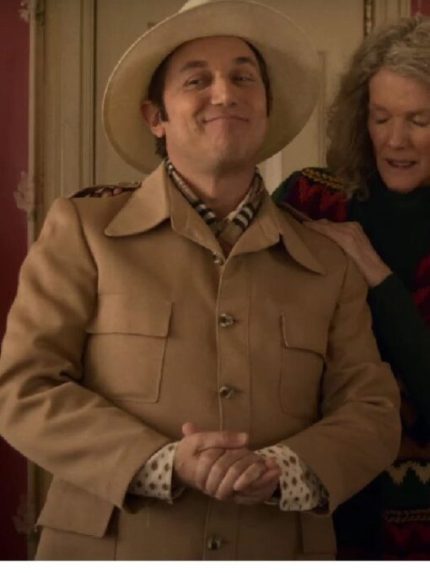

Authentic Christmas Story Snow Suit Embrace Randy’s Iconic Winter Wear
$189.00 – $229.00Price range: $189.00 through $229.00
- Material: Wool Fabric
- Inner: Viscose Lining
- Pockets: Two Side, Two Inner
- Color: Red
Relive the magic of A Christmas Story with our meticulously crafted Snow Suit, a perfect replica of Randy’s iconic winter attire. Designed with attention to every detail, this suit offers both nostalgic charm and functional warmth. Made from premium materials, it ensures durability and comfort during winter days. Whether for themed parties or cozy winter outings, this snow suit brings iconic style, warmth, and a heartwarming tribute to a beloved film. Our website offers a range of leather jackets & Suits.
Jacket Specifications:
- Material: Wool Fabric
- Inner: Viscose Lining
- Pockets: Two Side, Two Inner
- Hemline: Rib Knitted
- Sleeves: Full Length
- Collar: Classic Style
- Cuffs: Rib Knitted
- Closure: Buttoned Front
- Color: Red
Pant Specifications:
- Material: Wool Fabric
- Pockets: Two Side
- Length: Full Length
- Color: Red
Relive the nostalgia of A Christmas Story with our Randy-inspired Snow Suit! Perfect for winter events or themed parties, it blends authentic detailing with premium leather jackets comfort. Don’t wait—buy the Christmas Story Snow Suit today and cherish the magic of this timeless classic!
| Size |
S ,M ,L ,2XL ,3XL ,4XL ,5XL |
|---|
3 reviews for Authentic Christmas Story Snow Suit Embrace Randy’s Iconic Winter Wear
Popular products


12 Gauge Men’s Leather Vest for Motorcycle Riders


13 Reasons Why Justin Foley (brandon Flynn) Jacket- Dylan Minnette


1950s Motorcycle Black Leather Jacket


1965 Minnesota Twins Varsity Blue Wool Jacket


1990 Stussy International Tribe Wool & Leather Red Vintage Varsity Jacket


8 Ball 90s Black Vintage Bomber Jacket


8 Ball 90s Style White Bomber Jacket


8 Ball Bubble Parachute Jacket


8 Ball Logo Fur Hooded Parka Leather Jacket


8 Ball Logo Printed Red Fur Jacket


8 Ball Logo Red Black and White Bomber Jacket







Amelia Rose (verified owner) –
Product feels sturdy and durable.
Percy James (verified owner) –
Customization options were great!
Clara (verified owner) –
The delivery speed was incredible.